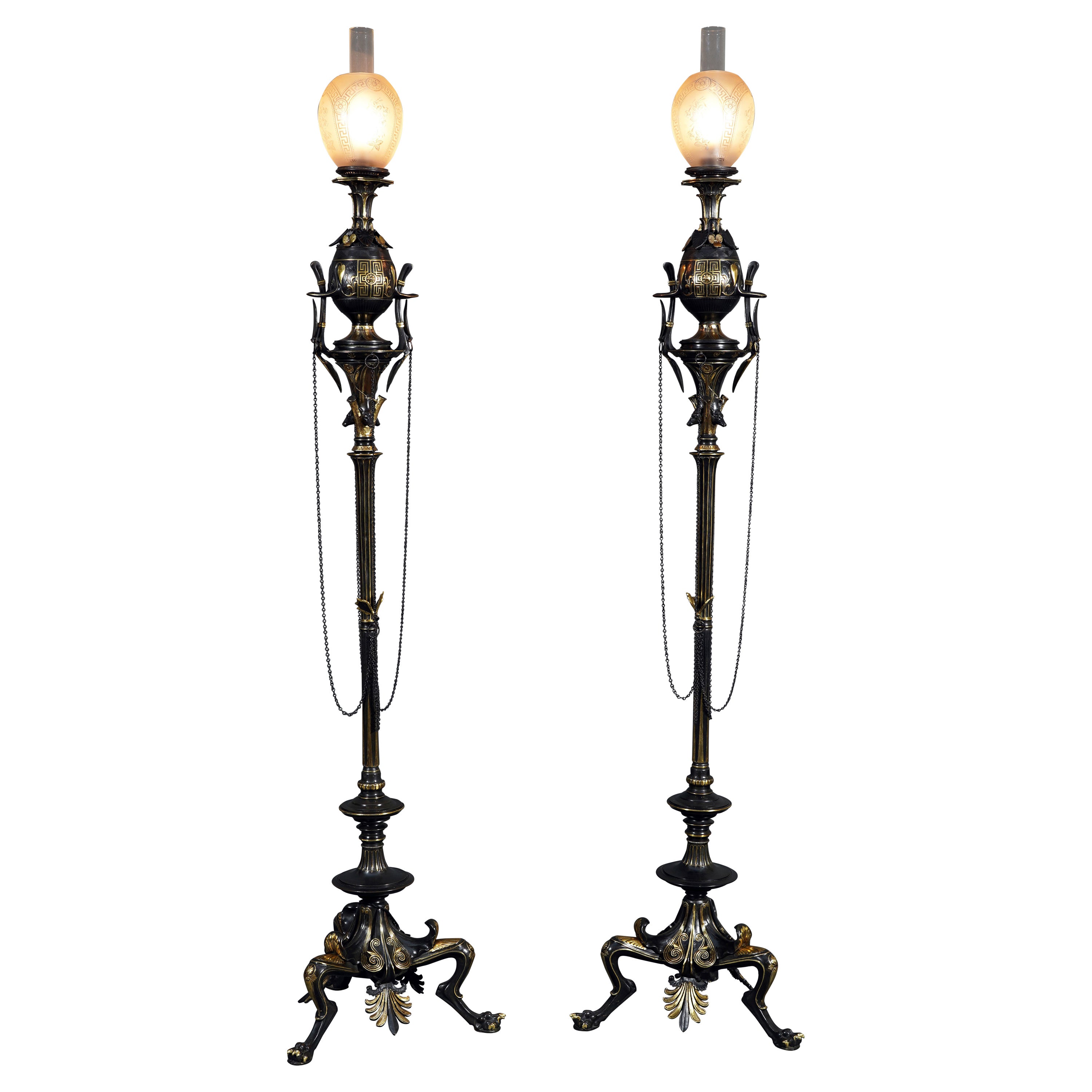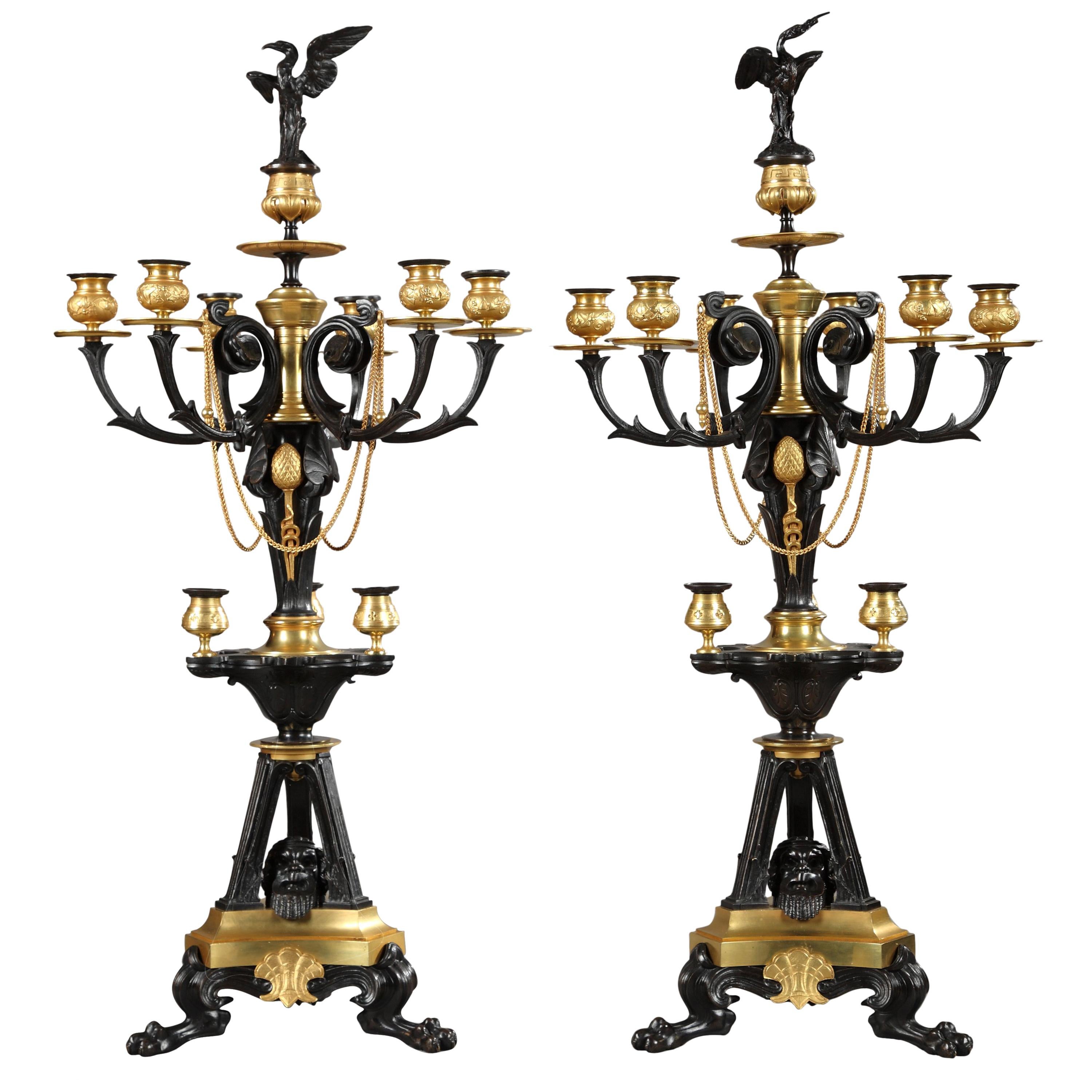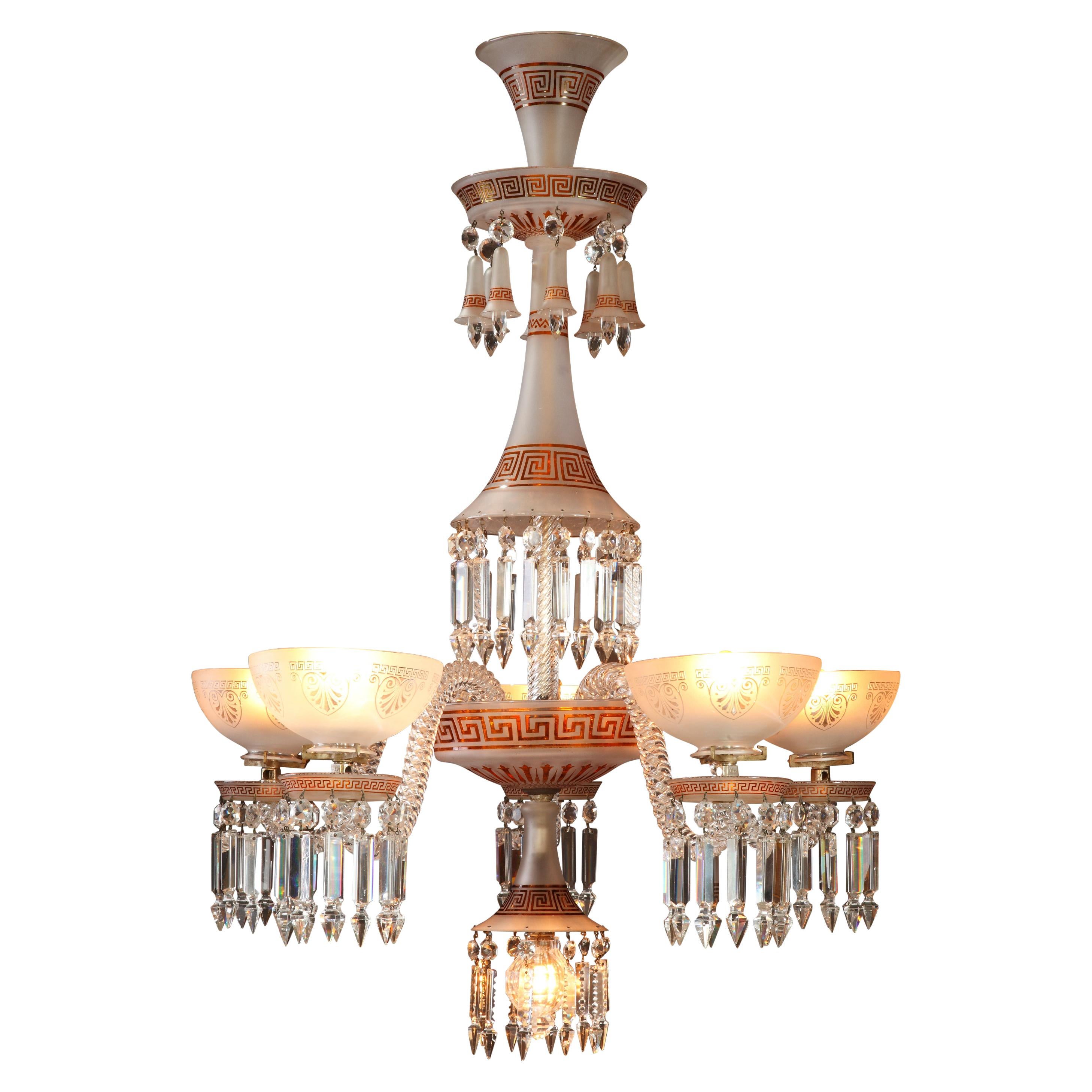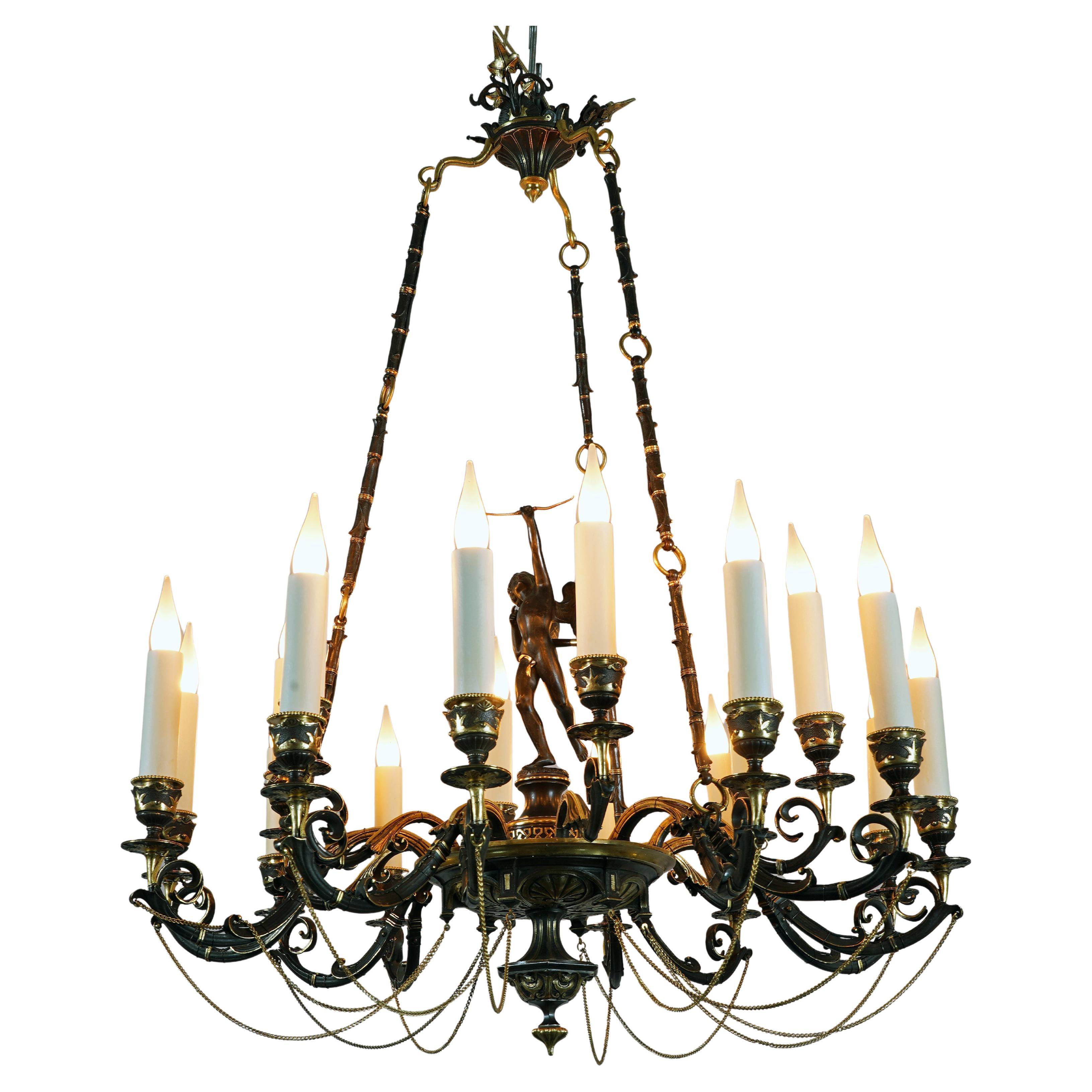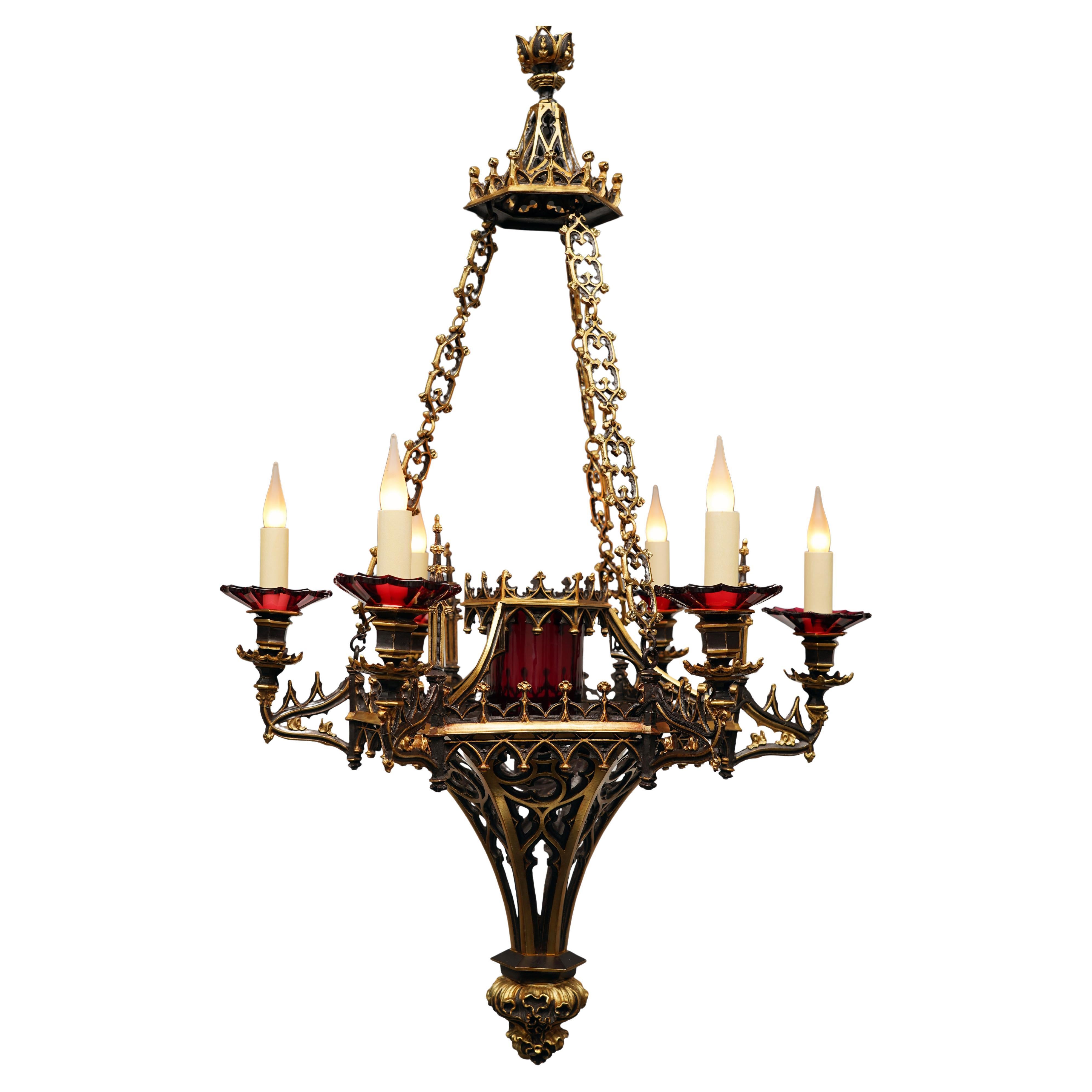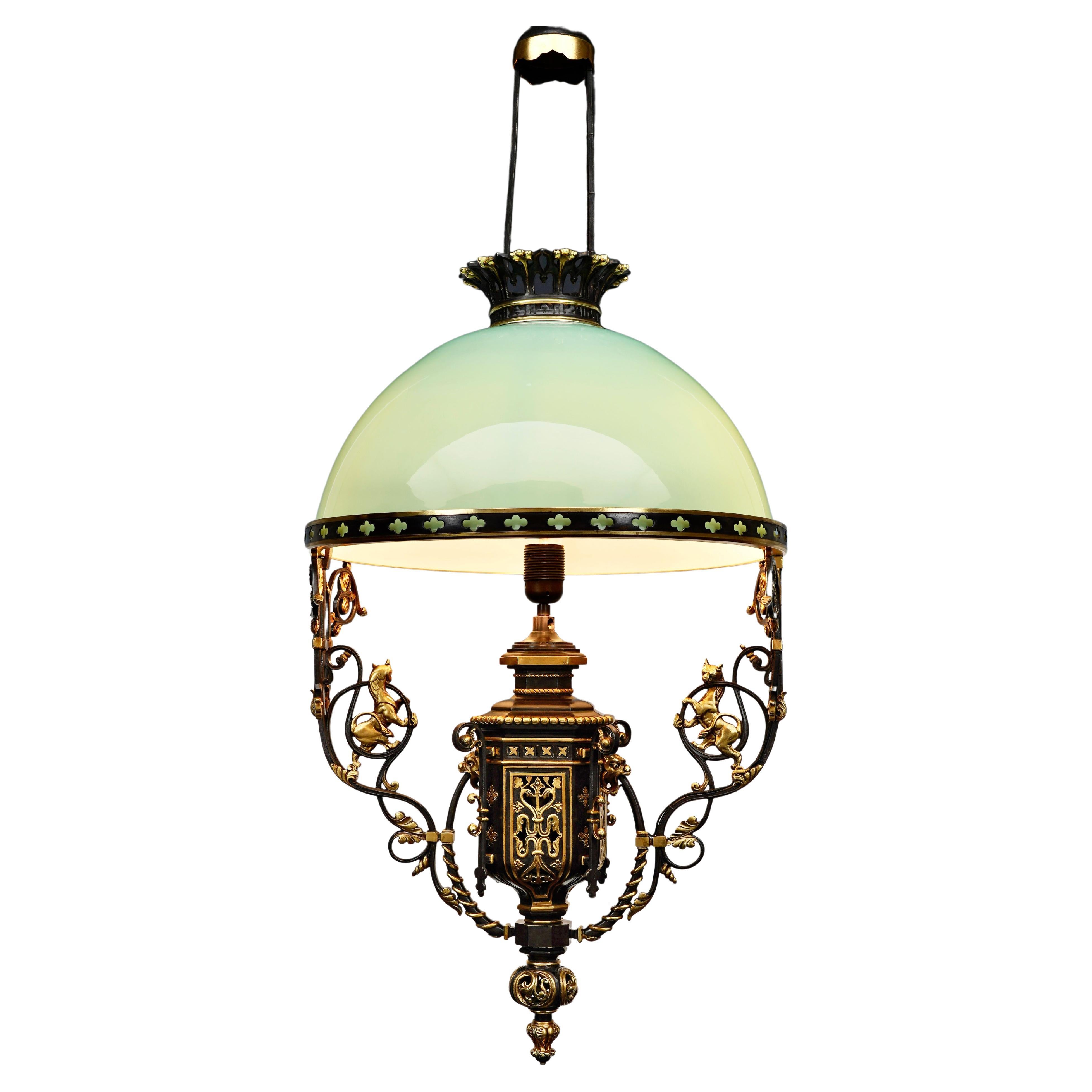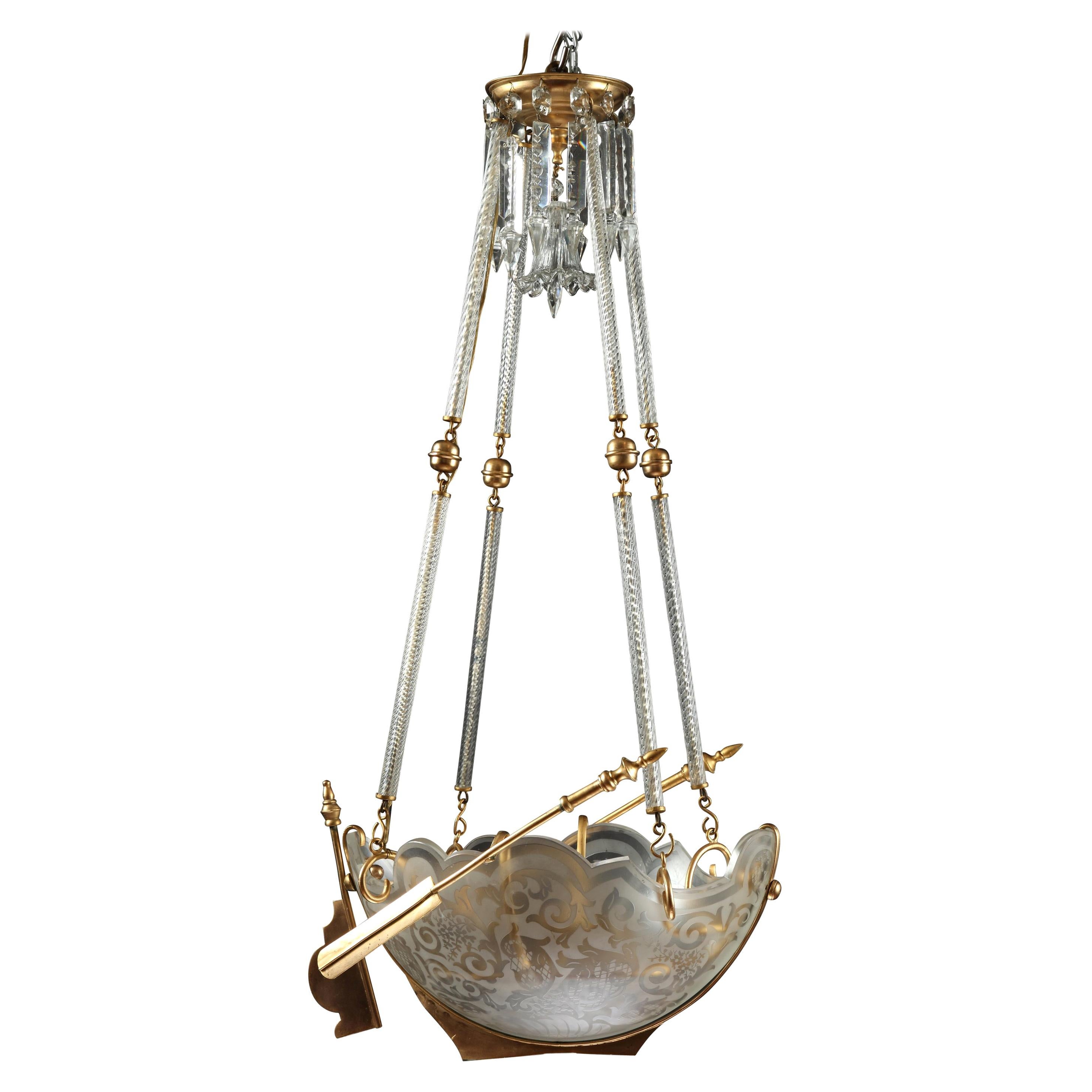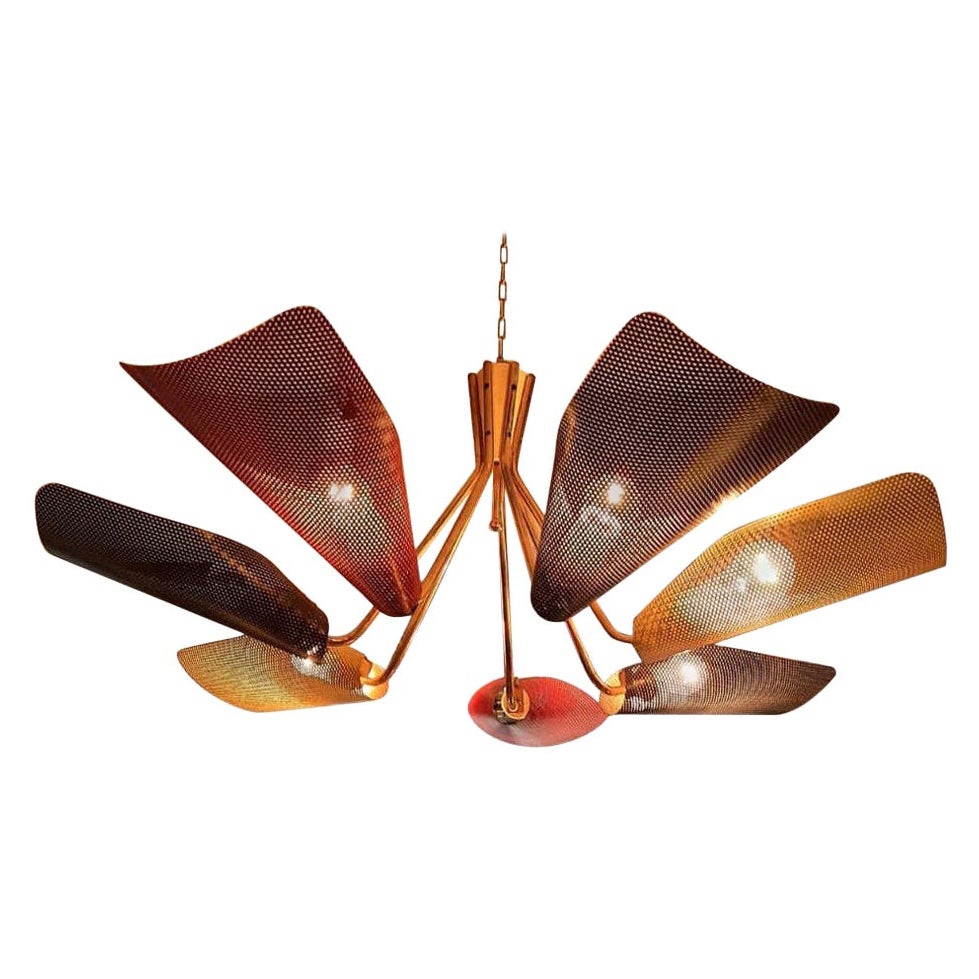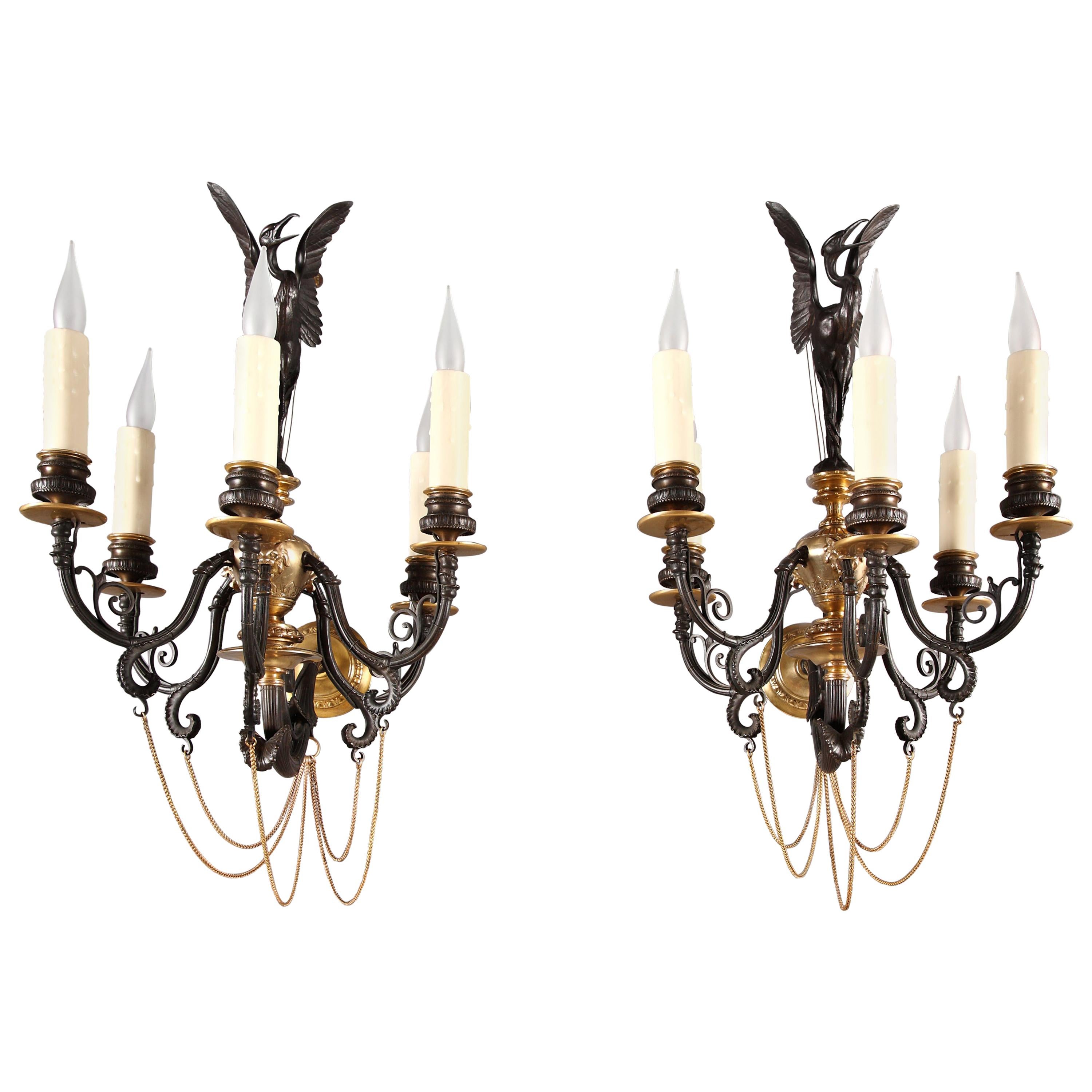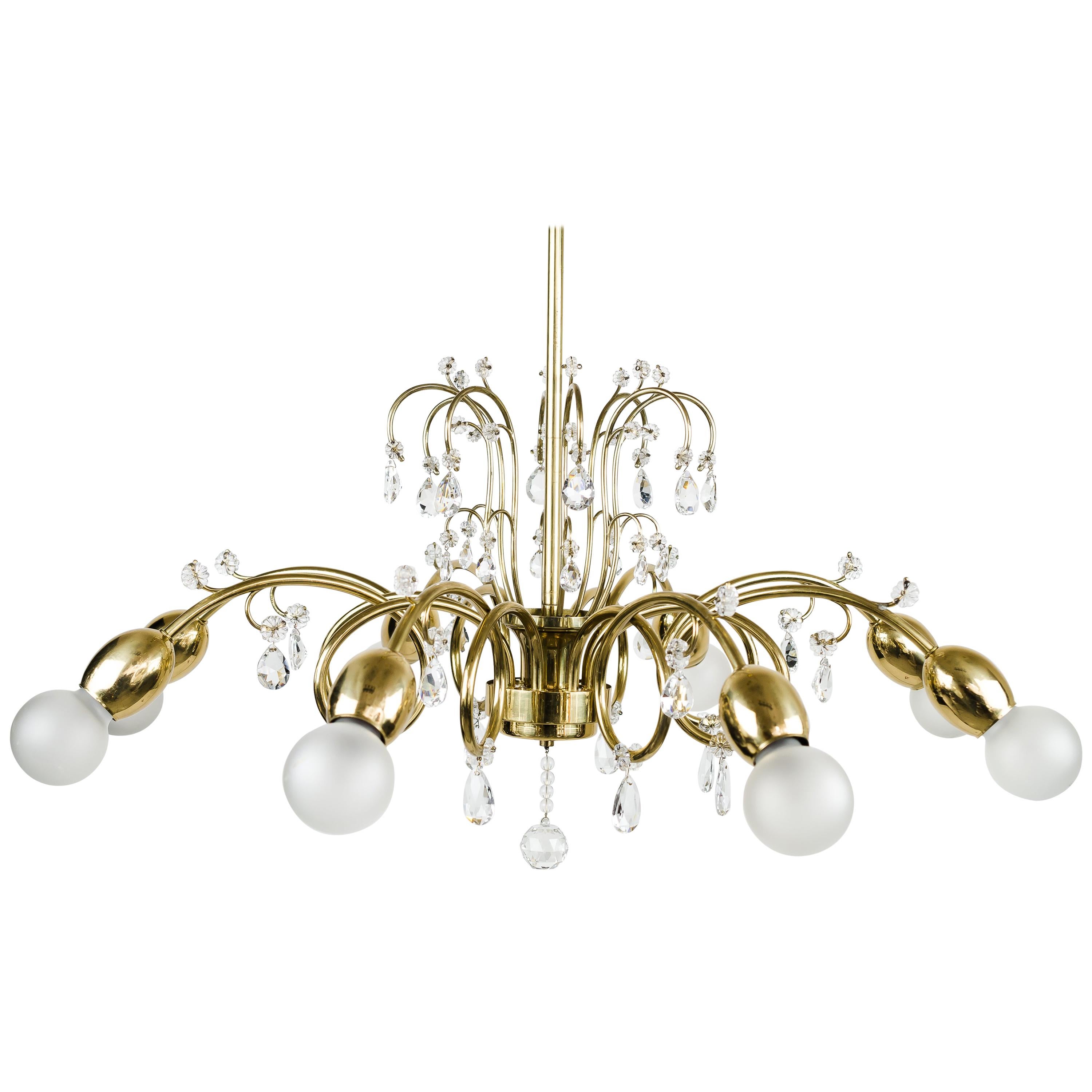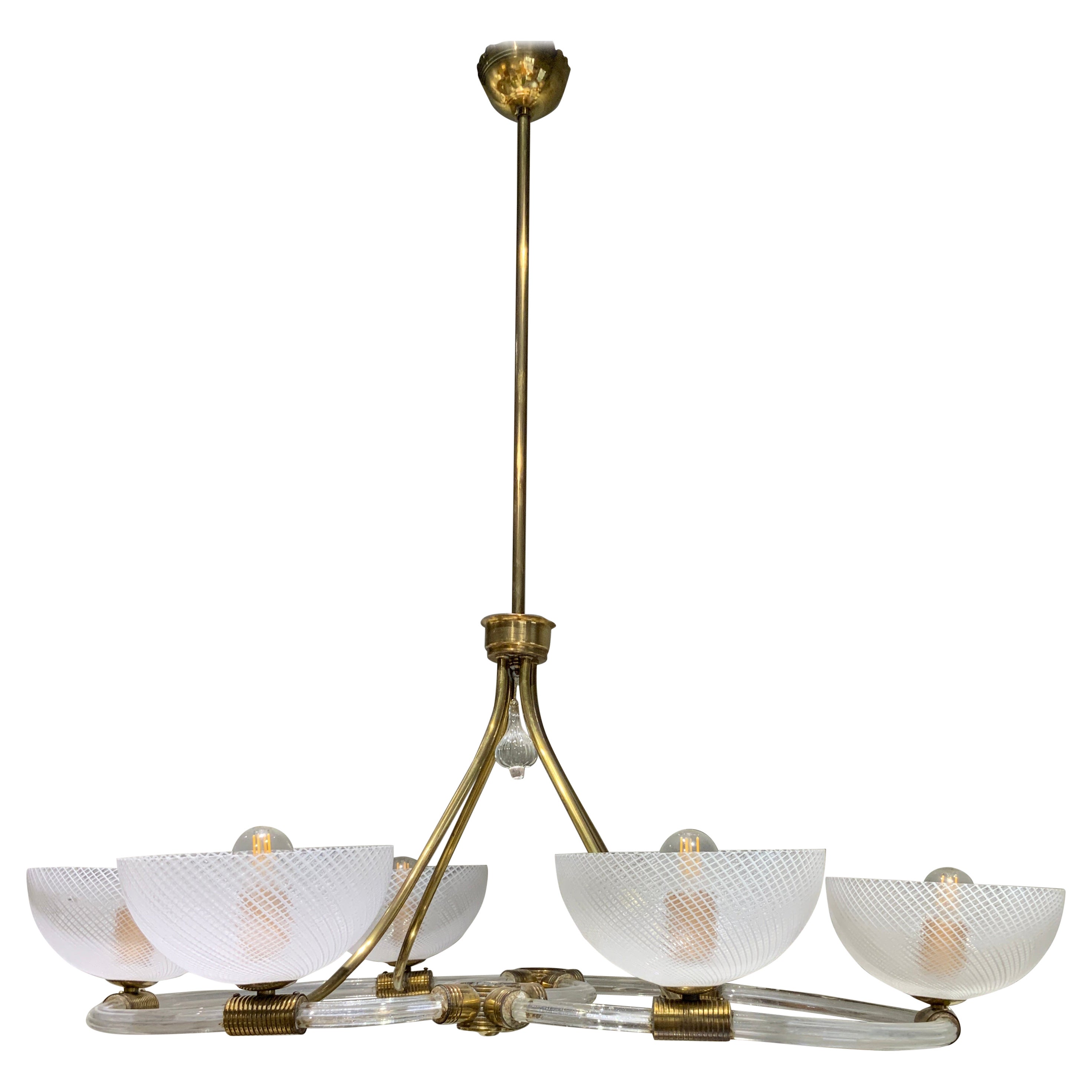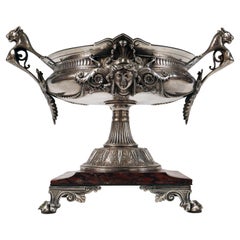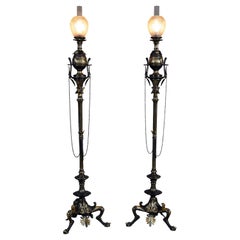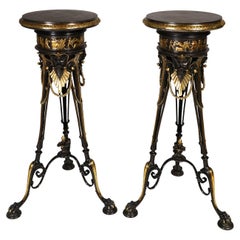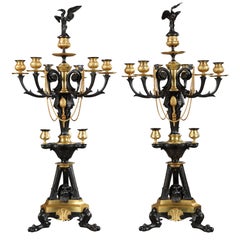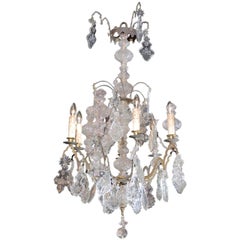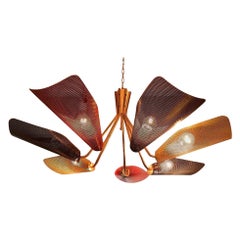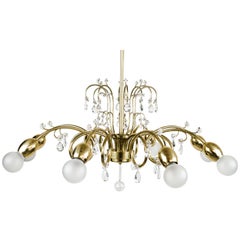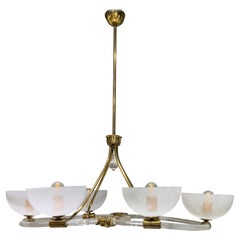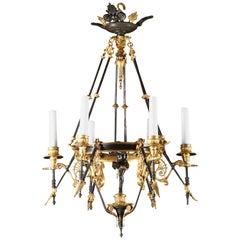
Greek Revival “Dancer” Chandelier Attributed to G. Servant, France, Circa 1860
View Similar Items
Want more images or videos?
Request additional images or videos from the seller
1 of 7
Greek Revival “Dancer” Chandelier Attributed to G. Servant, France, Circa 1860
About the Item
- Attributed to:Georges Emile Henri Servant (Maker)
- Dimensions:Height: 26.38 in (67 cm)Diameter: 18.9 in (48 cm)
- Style:Greek Revival (In the Style Of)
- Materials and Techniques:
- Place of Origin:
- Period:
- Date of Manufacture:circa 1860
- Condition:Wear consistent with age and use.
- Seller Location:PARIS, FR
- Reference Number:Seller: 11261stDibs: LU3860313543142
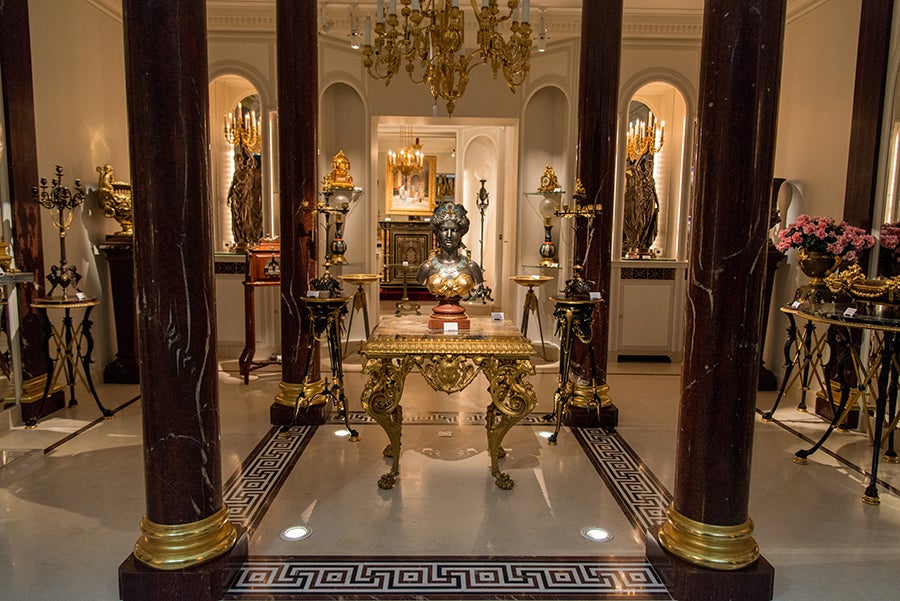
About the Seller
4.9
Gold Seller
Premium sellers maintaining a 4.3+ rating and 24-hour response times
Established in 1997
1stDibs seller since 2018
85 sales on 1stDibs
Typical response time: 1 hour
Associations
International Confederation of Art and Antique Dealers' Associations
Authenticity Guarantee
In the unlikely event there’s an issue with an item’s authenticity, contact us within 1 year for a full refund. DetailsMoney-Back Guarantee
If your item is not as described, is damaged in transit, or does not arrive, contact us within 7 days for a full refund. Details24-Hour Cancellation
You have a 24-hour grace period in which to reconsider your purchase, with no questions asked.Vetted Professional Sellers
Our world-class sellers must adhere to strict standards for service and quality, maintaining the integrity of our listings.Price-Match Guarantee
If you find that a seller listed the same item for a lower price elsewhere, we’ll match it.Trusted Global Delivery
Our best-in-class carrier network provides specialized shipping options worldwide, including custom delivery.More From This Seller
View AllNeo-Greek Silvered Bronze Bowl Attributed to G. Servant, France, circa 1880
By Georges Emile Henri Servant
Located in PARIS, FR
Beautiful silvered bronze neo-Greek style bowl in a circular shape, adorned on the body with female masks in the antique style and on the sides with handles in the shape of busts of ...
Category
Antique 1880s French Greek Revival Decorative Bowls
Materials
Griotte Marble, Bronze
Pair of Neo-Greek Floor Lamps Attributed to G. Servant, France, Circa 1870
By Georges Emile Henri Servant
Located in PARIS, FR
Rare pair of Greek style floor lamps made in patinated bronze attributed to G. Servant, each surmounted of a frosted glass globe engraved of stars and a Greek motif frieze. The body of the vase, decorated with Greek style patterns such as palmets, Greek motif frieze and water leaves, stands on a shaft decorated with deer heads. Fine chains are connected to a delicate butterfly. The set is based on tripod legs with lion claw feet alternating large palmets.
Height : 183 cm (72 in.) ; 213 cm (83 3/4 in.) with glass shades ; Diameter : 43 cm (19 2/3in.)
Georges Emile Henri Servant (1828-c.1890), who took over his father in 1855 at their foundry, rue Vieille-du-Temple, in Paris, specialized in the production of neo-Egyptian style clocks, very popular in France since 1860’s, and also the making of Greek style decorative objects. He drew considerable attention to the high quality of his bronzes at the 1855 Paris Universal Exhibition and then at the 1862 London Exhibition. At this time Servant exported up to 40% of his production, principally to the United States, where for instance, his clocks were sold with great success by Louis Tiffany Inc. or Hamann & Roche of New York. But his success came really at the 1867 Paris Universal Exhibition, where he was awarded a gold medal for his neo-Greek and Egyptian works (Les Merveilles...
Category
Antique 1860s French Greek Revival Floor Lamps
Materials
Bronze
Pair of Neo-Greek Pedestals, attributed to G.Servant, France, Circa 1880
By Georges Emile Henri Servant
Located in PARIS, FR
Pair of patinated and gilded bronze turntable pedestals with for each of them, three paw feet, headed by stylized lion muzzles, ornated with beaded chains and joined by a fine foliate stretcher. The belt is adorned by a banded frieze cast in low-relief representing an ancient scene : “The Battle of the Lapithes and the Centaurs”.
These pedestals can be associated with the "Vases de Bacchus", presented by G. Servant at the 1867 Exposition Universelle, on which the similar ornamentation is applied.
(Reproduced in « Merveilles de l'Exposition Universelle de 1867 », Jules Mesnard, p°167)
Biography :
Georges Emile Henri Servant...
Category
Antique 1880s French Greek Revival Pedestals
Materials
Bronze
Pair of Neo-Greek Bronze Candelabras Attributed to G.Servant, France, Circa 1870
By Georges Emile Henri Servant
Located in PARIS, FR
Rare pair of Greek style candelabras made in patinated bronze and gilded bronze, attributed to G. Servant. Each with ten light arms topped by a heron shaped extinguisher. Decorated with various Greek style motifs such palmets, pine cones ans water leaves. Standing on a small triangular architecture presenting a theatre mask and reposing on a tripod base formed with lion paw feet.
Georges Emile Henri Servant (circa 1828-1890), who took over his father in 1855 at their foundry, rue Vieille-du-Temple, in Paris, specialized in the production of neo-Egyptian style clocks, very popular in France since 1860’s, and also the making of Greek style decorative objects. He drew considerable attention to the high quality of his bronzes at the 1855 Paris Universal Exhibition and then at the 1862 London Exhibition. At this time Servant exported up to 40% of his production, principally to the United States, where for instance, his clocks were sold with great success by Louis Tiffany Inc. or Hamann & Roche of New York. But his success came really at the 1867 Paris Universal Exhibition, where he was awarded a Gold Medal for his neo-Greek and Egyptian works (Les Merveilles...
Category
Antique 1870s French Greek Revival Table Lamps
Materials
Bronze
$8,128 Sale Price / set
62% Off
Neo-Greek Opaque Crystal Chandelier Attributed to Baccarat, France, Circa 1890
By Cristalleries De Baccarat
Located in PARIS, FR
Charming six-light chandelier attributed to Baccarat in clear and opaque cut crystal decorated with Greek friezes in orange tones. The central shaft, formed of inverted cones and cup...
Category
Antique 1890s French Greek Revival Chandeliers and Pendants
Materials
Crystal
Neo-Egyptian Marble Clock Attributed to G. Servant, France, Circa 1870
By Georges Emile Henri Servant
Located in PARIS, FR
Black and red marble pyramid shaped Egyptian style clock attributed to G. Servant, surmounted by a patinated bronze figure representing the Egyptian goddess Isis sitting on her throne. Wearing the Hathor hairdress (the solar disc surrounded by the sacred cow horns), she holds in her right hand the Ouadj, the goddesses scepter surmounted by a canopy of papyrus, symbolizing health and eternal youth and in her left hand, the cross of life Ankh, symbol of rebirth and eternity.
That Egyptian style in fashion since Napoleon the First and his military campaigns in Egypt around 1799 was rediscovered in France in the 1830's and above all in the 1860's. Some renowned French artists, such the sculptors and bronze-casters Guillaume Denière (1815-1903), Emile Hébert (1828-1893) et Georges Servant (1828-1890), presented at the 1867 and 1878 Paris Universal Exhibitions, an a-part section dedicated to their Egyptian style production. Their shows drew then considerable attention from the public and the wealthy collectors. During the 1867 Universal Exhibition, one could admire the Stand realized by the French silversmith-jeweller Gustave Baugrand (1826-1870), where his works executed in most Fine materials took inspiration from the Egyptian Antiques, exhibited then in the Louvre museum.
Georges Emile Henri Servant (1828-c.1890), who took over his father in 1855 at their foundry, rue Vieille-du-Temple, in Paris, specialized in the production of neo-Egyptian style clocks, very popular in France since 1860’s, and also the making of Greek style decorative objects. He drew considerable attention to the high quality of his bronzes at the 1855 Paris Universal Exhibition and then at the 1862 London Exhibition. At this time Servant exported up to 40% of his production, principally to the United States, where for instance, his clocks were sold with great success by Louis Tiffany Inc. or Hamann & Roche of New York. But his success came really at the 1867 Paris Universal Exhibition, where he was awarded a gold medal for his neo-Greek and Egyptian works (Les Merveilles...
Category
Antique 1870s French Egyptian Revival Table Clocks and Desk Clocks
Materials
Marble, Bronze
You May Also Like
French Baroque Revival Six-Light Crystal Chandelier from a Church, circa 1860
Located in Atlanta, GA
A French Baroque Revival crystal six-light chandelier from the mid 19th century, with black patinated bronze armature, pendeloques, rosettes and monograms. Found in a French church, ...
Category
Antique Mid-19th Century French Baroque Revival Chandeliers and Pendants
Materials
Crystal, Bronze
$7,160 Sale Price
20% Off
French Chandelier Attributed to Mathieu Matégot
By Mathieu Matégot
Located in Houston, TX
French Chandelier Attributed to Mathieu Matégot
This stunning French mid century modern chandelier has 7 perforated polychromed m...
Category
Vintage 1950s French Mid-Century Modern Chandeliers and Pendants
Materials
Metal
Two Chandeliers circa 1950s Attributed to Lobmeyr
By J.L Lobmeyr
Located in Wien, AT
Two chandeliers circa 1950s attributed to Lobmeyr
Good original conditions
Sale and price per piece.
Category
Vintage 1950s Austrian Mid-Century Modern Chandeliers and Pendants
Materials
Crystal, Brass
$2,120 / item
Murano chandelier circa 1940 attributed to Seguso
By Seguso Vetri d'Arte
Located in PARIS, FR
Elegant 6 arms chandelier, with brass details attributed to Seguso
Made in Murano Venice circa 1940
Nice vintage condition
Category
Vintage 1940s Italian Mid-Century Modern Chandeliers and Pendants
Materials
Brass
Italian Chandelier, attributed to Brusotti, circa 1938
By Luigi Brusotti
Located in Los Angeles, CA
attributed to Brusotti, circa 1938 chandelier.
Category
Vintage 1930s Italian Chandeliers and Pendants
Materials
Brass
French Modernist Chandelier attributed to Philippe Jean
By Philippe Jean
Located in Austin, TX
Lantern from the Modernist period in France. This fixture features a central glass globe with eight arms of black lacquered metal. Each is capped with chrome and features chrome deta...
Category
Vintage 1970s French Modern Chandeliers and Pendants
Materials
Metal
Recently Viewed
View AllMore Ways To Browse
Egyptian Chandelier Antique
Chandelier 1860s France
Greek Chandelier Revival
Red Globe Lamp
Stilnovo 3 Light
Teardrop Crystal Chandelier
Wabi Sabi Lighting
White Glass Ball Chandelier
Wire Bridge
1910 Ceiling Light
1920s Gilt Chandelier
Art Deco Lighting Venini
Bruno Gatta For Stilnovo
Bulbous Chandelier
Danish Cone Lamps
Doria Space Age
Foscarini Murano
Glass Teak Pendant Lamp
